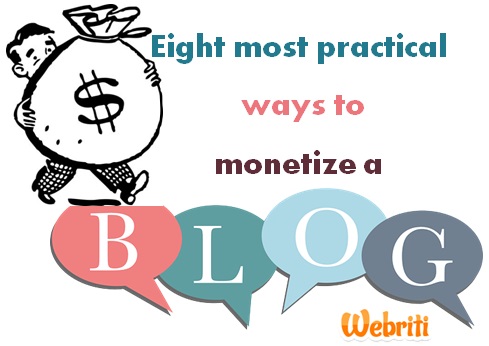When you have registered a domain and , it time to map the domain with your web host. This step might not be required if you have purchased both domains and web hosting from same provider. But if providers for Domains and web hosts are different, you need to map the domain with host server.
Read More
After WordPress vs. Joomla comparison, WordPress certainly sounds like a better option for newbies. It doesn’t only let you create awesome blogs, but making great websites are also possible using WordPress efficiently.
A lot of people often wonder whether to have their own self hosted WordPress site or opting for a free domain on WordPress.com does the trick for them. Well, there are obvious differences between the two and definitely WordPress.org is going to give you a lot of customization options. Why then people still use WordPress.com? Let us explore.
Read More
WordPress is easy to install, easy to manage, easy to operate and at the same time, easy to hack. Yes! there are more loopholes than you can imagine to allow hackers to peep in to your blog.
Better safe than sorry!
Getting your website hacked is a nightmare. You can lose your website and its contents all of a sudden. But that doesn’t mean nothing can be done to prevent it from hacking. With some tweaks and hacks, you can make your website secure enough to avoid falling prey to wrong hands. And in case they manage to pull it down, you would be able to put it up and running within no time. Here are nine quick tips which will make your WordPress blog more secure and hack-proof.Read More
With the version 3.7, WordPress introduced a new feature called the Automatic updates. This feature allows WordPress to automatically update itself to the minor and security releases. However, by default the automatic updates are not enabled for major releases in order to avoid unexpected compatibility issues with existing themes and plugins.
Disable automatic updates for minor / security releases in WordPress
There could be several reasons you might not like the idea of automatic updates. Some developers often modify core WordPress files, or sometimes you might need to prepare your theme or plugins to make them compatible with the next update. Whatever be the case, switching to manual updates gives you a better control, allowing you to skip some minor updates (although not recommended) or updating as per your convenience.Read More
WordPress Toolbar (formerly admin bar) is a super useful feature provided by WordPress . It provides one click access to many features and makes managing the blog a whole lot easier. You can access customization options, add a new post, edit an existing post and do a lot more stuff with just one click.
Although the default WordPress toolbar comes with a host of useful features, you might often feel a need to tweak it to make it more suitable to your requirements . So, here I will share some simple tweaks and customization which you can apply to the Admin Bar
Blogs have steadily moved from being a medium to vent out something, to a business. It’s no more just a platform to express yourself, but to make a great deal of money as well.
There are various ways to monetize a blog if it’s getting a steady flow of traffic, and most of them can run simultaneously. While most of the bloggers rely only on advertisement income, some go out of the way to maximize their blog revenue by using multiple streams. Here we list eight different monetizing strategies which are most popular amongst the bloggers across the globe.
Best ways to monetize a website
1. Advertisement
Advertisement is hands down the best monetization technique for any kind of website. However, how you manage your ad inventory makes a lot of impact on how much you earn. The first thing you need to know about is the types of ads based on the way they earn money.
– CPC (cost per click) and CPM (cost per mile): These are essentially parameters by which ad companies pay you. In CPC, the companies pay you a certain (fixed or variable) amount per click on the ads posted on your blog. In CPM, you are paid a fixed amount per thousand impressions of the ad unit. Leading CPC and CPM companies are Google Adsense, Media.net, Chitika etc.
– Sell ad space: You can also opt to sell some ad space on your blog for a fixed price. The spaces are sold for a certain period of time and the payout is independent of events like click or impression. You can choose to sell the ad slots directly on your blog or some webmaster’s forums (e.g. Digitalpoint, Warriorforums etc.) or through a third party service like BuySellAds.com.
Tip: Use a combination of both the techniques to maximize the ad revenue from your blog.
2. Affiliate marketing
Affiliate marketing is another popular way of monetizing your blog. It essentially means tying up with affiliate marketing companies such as Clickbank and Commission Junction, or joining e-commerce site such as Amazon, who pay you commission for the products sold through your affiliate links.
Affiliate marketing is recommended if you are running a blog related to product reviews, launch coverage, price comparison etc. If you want to be successful in affiliate marketing, you must provide consistent quality material on a regular basis, and make your blog a brand. This often takes more than a solo effort and you may probably need a team of writers, designers and web developers to be successful.
3. Paid Reviews
If your readers bank on your reviews, the product owners will be happy to offer you products to do hands on, more often for a charge. This generally works well if you have a high traffic count and have established yourself as someone with an honest opinion. Sites like PayPerPost, SponsoredReviews and ReviewMe are popular options for first timers, and as you gain in reputation, companies would directly approach you to test their products.
Tip: A paid review doesn’t necessarily mean that you always praise the product. Accepting to write a dishonest review might earn you some quick bucks, but hits you hard in the long run.
4. Paid Guest posting
Guest posting is considered as the most effective search engine optimization techniques now-a-days. If you have an authoritative blog, you might allow other bloggers or website owners to write guest posts on your blog, and charge for it. This works excellent if your blog has a high page rank in addition to a great traffic.
5. URL shorteners
URL shortening websites shorten a long web URL to only a few characters, serving various purposes e.g. reduce the character count to post in micro blogging sites like Twitter, bypass security that have filters against particular words, cloak an affiliate link, back link anonymously etc.
Lately, many companies have started monetizing with this technique by taking the users to an advertisement page before redirecting to the original link. You can make money with this technique, if you link out a lot. Adf.ly is the leading URL shortening company which pays you on per click basis.
6. File hosting
If you are providing some downloadable content to your readers on a regular basis, you may host these files on a third party website, and earn money every time it’s downloaded (Pay per download). These file hosting companies sell memberships for a small fee and provide additional benefits to subscribed downloaders. Leading companies which pay you for sharing files through them are ShareCash, DepositFiles, Uploading.com etc.
Tip: Both the URL shorteners and file hosting techniques are used mostly by the people involved in distribution of pirated contents. Use these methods with caution if you are running a legitimate blog.
7. Video blogging
If a picture speaks thousand words, a video must utter a million. Rather than writing a multipage tutorial, it could be a good idea to upload a video on YouTube. This concept goes well with product reviews as well. Videos posted on YouTube could be monetized easily by linking it with your Adsense account. You can also embed the videos on your blog to increase the views and earnings.
8. Flipping the website
Do you feel your blog’s traffic has gone stagnant now? Are you running out of ideas to keep your blog interesting and appealing to people, and push the traffic further? If earning money was your prime motive behind building the blog, you might plan for an exit at this point. List your website on Flippa and let it go for a handsome amount.
What are your prime monetization techniques? Did we miss some great strategy here? Let us know your views via comments.
WordPress is a great option when your client wants a website for his small business. Not only it is suitable for a website with few pages and products, but also stands as a robust platform when your client wants to expand its scope with the expanding business.
First meeting of your client with the admin panel of WordPress could be scary. Things could go worse if your client is adventurous and loves experimenting. It’s always better to optimize the backend and make your WordPress admin dashboard client friendly. It will make thing easy for your clients and reduce the risk of getting things messed up for no reason.
Optimizing a WordPress admin panel for clients is an easy and straight forward process. You can either chose to achieve it through a set of plugins or by tinkering with codes. I prefer the plugin way for this tutorial, not just because it’s easy to implement, but it’s also a more stable options with regards to regular WordPress updates, theme updates, change of theme etc.Read More
Over the years WordPress has evolved from a simplistic blogging engine to a very Powerful CMS. Despite of being an awesome CMS, WordPress comes with its own set of issues. One issue that should concern you most is that, it’s fairly slow in comparison to many other platforms. Every element of your webpage (e.g. widgets, comment forms etc.) on WordPress makes a database call and it negatively affects the page loading time.
Improving page load time – Why it’s important?
A slow website can’t hold visitors for long. Worse, if the first page served to a new visitor is taking too much time to load. He might give up the idea to wait and go away, without even giving a glance to your content. Isn’t that a chance lost?
We have already talked about the open source website scripts in the previous story, WordPress vs Joomla. While these open source scripts deliver a great control over websites, they definitely need a learning curve. You can pretty easily learn beginners essentials e.g buying a domain, webhost etc though our web development tutorial series, but learning about working on WordPress or Joomla like a pro takes a bit of time.
If you are in a hurry to launch your first website, you can take a route to DIY (Do it yourself) website builders. Instead of starting with hosting and configuration, you can directly jump in to an easy to use backend to drag and drop the elements of your website.
Read More
Having gone through the primary requisites of , and domain mapping, its time to decide how to actually build the pages of your website.
There are several ways to go about it. The most basic and also the most intimidating road to build your web page is to hand code it using programming languages like HTML, CSS and Javascript. The problem with this traditional method is that it involves a pretty long learning curve that often scares away the non-tech-savvy user.
This problem was solved with the advent of open source content management systems (CMS) like WordPress and Joomla. These provided a graphical user-interface and considerably reduced the need to learn any of the programming languages. You could just click a couple of buttons here and there and voila! You would have had a page with its most common elements flash on your screen.Read More




